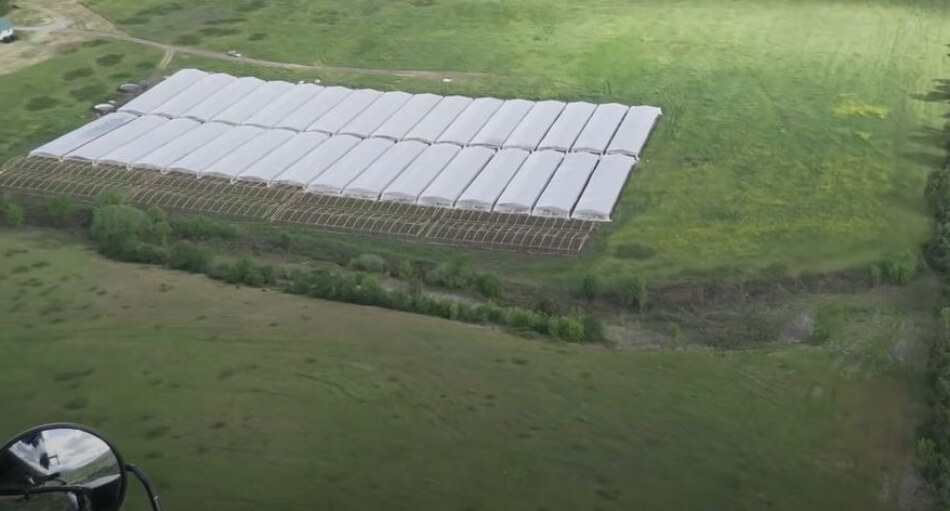A coronavirus-induced labor shortage among marijuana cultivators is causing production delays, straining workers and costing some companies thousands of dollars in lost profits.
Nirvana Group, a vertically integrated medical marijuana company in Tulsa, Oklahoma, is in the middle of its fall outdoor harvest, and CEO Arshad “Adam” Lasi said the company has had to halt work several times because of worker shortages.
The company is trying to harvest about 80,000 plants and, ideally, would be cutting down a couple of thousand a day, according to Lasi.
But the company has been unable to hit that number with its current workforce.
Lasi estimates Nirvana will lose upwards of half a million dollars because the plants won’t be cured, harvested and processed in time.
“It’s spoiling in the field,” he said. “That’s a half-million dollars that’s not in my pocket.”
Sweetening the pot
Across the country, cannabis cultivation companies are raising wages and offering more benefits to recruit and retain workers as the industry experiences the same labor challenges facing mainstream businesses across the U.S. economy.
The U.S. Labor Department reported that U.S. companies added 194,000 nonfarm jobs in September, far below Wall Street expectations.
Also, roughly 180,000 fewer people looked for work last month compared to the previous month.
Many Americans have exited the labor force because of concerns over COVID-19, child care needs, career changes and other factors.
Still, even offering several dollars over minimum wage for entry-level employees and field workers isn’t enough for some cannabis cultivation companies to meet staffing needs.
“We’re willing to pay them, we have the money to pay them, they just don’t want to work,” Lasi said.
Business leaders need reliable industry data and in-depth analysis to make smart investments and informed decisions in these uncertain economic times.
Get your 2023 MJBiz Factbook now!
Featured Inside:
- 200+ pages and 50 charts with key data points
- State-by-state guide to regulations, taxes & opportunities
- Segmented research reports for the marijuana + hemp industries
- Accurate financial forecasts + investment trends
Stay ahead of the curve and avoid costly missteps in the rapidly evolving cannabis industry.
Workers seem reluctant to get back into the market, according to Lasi, who said he’s paying $10-$15 an hour. The minimum wage in Oklahoma is $7.25 an hour.
He’s also adding performance bonuses based on the amount of work each day. He’ll add a dollar per each plant harvested, for example.
But he’s still struggling to find help
Most of the work is outside, so Lasi doesn’t believe the workers are staying home because they’re concerned about catching the coronavirus.
He blames the federal government’s pandemic aid in the form of stimulus money and increased unemployment benefits for the worker shortage.
But other experts say those factors aren’t the cause. The expiration of higher unemployment benefits last month, for example, failed to produce a big increase in labor force participation.
More with less
At Denver-based vertically integrated company Native Roots, Chief Operating Officer Beth Kotarba said the company cut cultivation staff during the early days of the pandemic and has struggled to rebuild its workforce ever since.
“We are feeling the pain, that’s for sure,” Kotarba said.
At any given time, the cultivation department could be down 10 or so employees.
“But we haven’t seen a drop off in production,” Kotarba added, commending her workers for picking up the slack.
Those workers who have shown loyalty are being rewarded, according to Kotarba.
“I’d rather have less people and reward them better,” she said. “The cost structure stays the same, and we’re paying our employees better.”
The hiring challenges are myriad, according to Kotarba. Applicants submit resumes, then don’t show for interviews. Workers are moving back to their home state or deciding to pursue other interests.
To combat that, Native Roots is also trying to attract entry-level workers with higher-than-base wages, despite the added labor costs.
“We’ve gone to upwards of $17 an hour,” Kotarba said. Minimum wage in Colorado is $12.32 an hour.
“We’re trying to consistently raise our hourly pay so we’re above the minimum wage and stand out in the cannabis industry.”
As for other benefits, the company offers a referral bonus for employees who recommend a successful hire.
For full-time workers, Native Roots offers health care and paid time off that begins to accrue as soon as the employee starts work.
Part-time workers will be eligible for health care next year.
“We’re just making the environment a good place to work so they enjoy it,” Kotarba said.
Safety at the forefront
In the less mature recreational cannabis market of Massachusetts, Southbridge-based vertically integrated cannabis company Green Meadows is offering workers above-market pay, medical and dental insurance as well as a 401(k) plan.
That’s according to Corey Bellrose, senior vice president of human resources, who said she’s paying close attention to the market and what the competition is paying.
Bellrose said Green Meadows looks for workers with passion and enthusiasm for the cannabis industry, which results in less turnover and a better overall culture for the team.
Cultivation workers also want to know they’re safe when they come to work.
“We have a very robust COVID policy on how we do things here,” she said.
The company closely follows guidance from the Centers for Disease Control and Prevention.
Workers wear masks, socially distance and adhere to strict hygiene and cleaning procedures.
As the company grows, Bellrose is considering other ways to keep workers safe, including staggered shifts or more weekend work.
If a worker tests positive for COVID-19, everyone is notified and the company uses federal financial assistance so the worker can stay home and recover.
“More often than not, they appreciate how transparent we are,” Bellrose said.
Cutting out trimming
At Chalice Brands in Portland, Oregon, Chief Operating Officer Meghan Miller tries to keep workers safe by running a lean operation.
One way she’s done that is to outsource the trimming process.
Instead of having an additional 15-20 people on-site and adding to the risk of exposure as they prune and shape flower, she sends the plant material to another facility.
“Any time you add trimming to the scene, it adds to the head count and can lead to a volatile experience,” Miller said.
While another company might consider automating the process, Miller prefers the old-fashioned way.
“Machine-trimmed weed is not my jam,” she said.
“Until there’s a machine that’s as good as a human, we have to have some humanity left in the process.”
Bart Schaneman can be reached at bart.schaneman@mjbizdaily.com.





